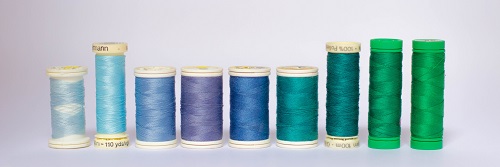What is CLSP in Yarn

To understand CLSP (Count Lea Strength in Pounds) in yarn, it’s important to consider its calculation and significance in different yarn types:
- Explanation of CLSP:
- CLSP is the product of Lea strength multiplied by the actual count of the yarn.
- Yarn Lea length typically measures 120 yards with a circumference of 1.5 yards.
- Standards and Factors Affecting CLSP:
- CLSP varies based on yarn type, quality, blend, and TPI (Twists Per Inch).
- For Open End Yarn:
- CLSP is usually lower than Ring Spun Yarn, typically ranging from 1700 to 1900 for cotton yarn.
- TPI influences CLSP, higher TPI results in a higher CLSP.
- For Ring Spun Yarn:
- Ring Spun yarn generally has better CLSP.
- CLSP for cotton carded yarns differs for knitting and weaving:
- Knitting: Typically between 2100 to 2300.
- Weaving: Generally falls between 2500 to 2800.
- CLSP for cotton combed yarns for knitting ranges from 2200 to 2500, depending on the TPI requirement.
Understanding CLSP helps gauge the strength of yarn in pounds, aiding in determining the suitability of yarn for specific textile applications. Factors like yarn type, spinning method, and intended use impact CLSP, guiding manufacturers and users in selecting the right yarn for various purposes.
How to Enhance Yarn Strength
Several key factors contribute to achieving better yarn strength:
- Fiber Quality: High-quality fibers, whether natural (like cotton or wool) or synthetic (polyester, nylon), form the foundation for strong yarn. Uniform and longer fibers often result in stronger yarn.
- Yarn Twist: The level of twist applied during spinning impacts yarn strength. Optimal twist adds cohesion and strength to the fibers, preventing them from separating easily.
- Yarn Evenness: Consistency in yarn thickness and density across its length is crucial. Irregularities or thick/thin spots can weaken the yarn.
- Spinning Method: Different spinning methods (ring spinning, open-end spinning) have varying effects on yarn strength. Ring spinning generally produces stronger yarn compared to open-end spinning.
- Tension Control: Proper tension during spinning and plying processes is essential. Inadequate or excessive tension can negatively affect yarn strength.
- Fiber Blending: Blending different fibers can enhance yarn strength by combining the advantageous properties of each fiber type.
- Finishing Processes: Post-spinning treatments, like twisting, plying, or adding coatings, can strengthen the yarn and improve its durability.
- Twists Per Inch (TPI): The number of twists per inch affects yarn strength. Higher TPI often results in stronger yarn due to better cohesion between fibers.
- Moisture Content: Controlling the moisture content during spinning and processing helps maintain yarn strength and prevents brittleness.
Manufacturers consider and optimize these factors during the spinning process to produce yarns with the desired strength suitable for specific applications in textiles, apparel, and other industries.